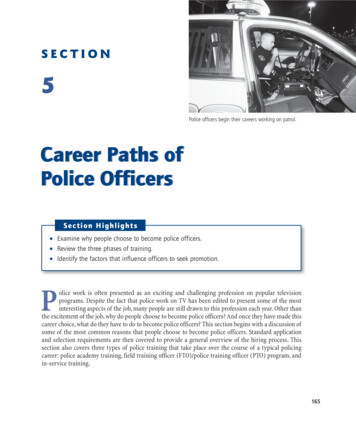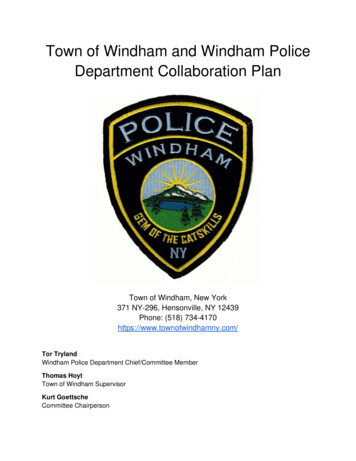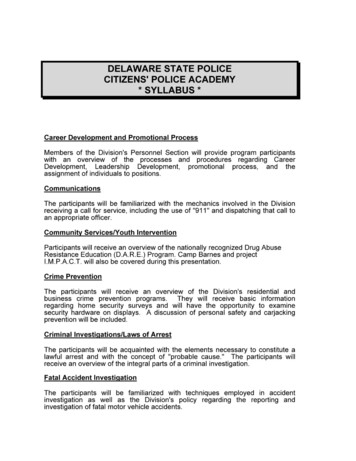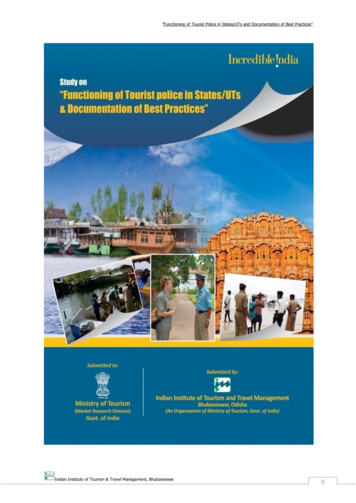
Transcription
“Functioning of Tourist Police in States/UTs and Documentation of Best Practices”Indian Institute of Tourism & Travel Management, Bhubaneswar0
“Functioning of Tourist Police in States/UTs and Documentation of Best Practices”STUDY ONFunctioninig of Tourist Police in States/UTs &Documentation of Best PracticesSubmitted toMinistry of Tourism(Market Research Division)Govt. of IndiaSubmitted by:Indian Institute of Tourism & Travel ManagementBhubaneswar, Odisha(An Autonomous Body under Ministry of Tourism, Govt. of India)Project TeamProject DirectorProf. Sandeep Kulshreshtha, Director, IITTMChief InvestigatorProf. Sarat Kumar Lenka, Nodal Officer, IITTM BhubaneswarInvestigatorsDr. Md. Sabir Hussain, Assistant Professor, IITTM, BhubaneswarShri Preji M P, Assistant Professor, IITTM, BhubaneswarShri Prasanth Udayakumar, Assistant Professor, IITTM, BhubaneswarIndian Institute of Tourism & Travel Management, Bhubaneswar1
“Functioning of Tourist Police in States/UTs and Documentation of Best Practices”ACKNOWLEDGMENTThe Indian Institute of Tourism & travel management (IITTM) is indebted to the Ministry ofTourism, Government of India for entrusting the responsibility of carrying out the projectstudy on the “Functioning of Tourist Police in the States/ UT’s and Documentation of BestPractices”. This study is the result of contributions of many connoisseurs ranging fromacademicians, industry experts, government officials, service providers, tourists, localresidents to many more. It is impossible to mention by name all those who have contributedin the making of this project, still we sincerely express our heartiest gratitude andappreciation for their kind cooperation and support.The project team of IITTM earnestly expresses its gratefulness to the officials of Ministry ofTourism, Government of India for having shown their confidence and unconditional trustduring the course of this project study. To acknowledge a few, Shri Vinod Zutshi , Secretary(Tourism), Shri Sanjeev Ranjan, Additional Secretary (Tourism), Dr. Ravi Kant Bhatnagar,Additional Director General (MR), Smt. Meenakshi Sharma, Addl. Director General (Tourism)and Shri Suman Billa, Joint Secretary (Tourism).We extend our sincere thanks to Smt. Mini Prasannakumar, Jt Director (MR), Ms. NehaSrivastava, Dy. Director (MR), Mr. Shailesh Kumar, Dy. Director (MR) and Mr. S.K. Mohanta,DPA for their support.We also record our thanks to the field investigators at different study locations for theirsupport to collect the data. We also extend our thanks to the senior officials of Ministry ofTourism and colleagues in IITTM campuses at Bhubaneswar, Gwalior, Noida, Goa and Nellorewho have given valuable insights towards the time bound completion of the study. We dulyacknowledge their contributions at different stages of the study.Project TeamIndian Institute of Tourism & Travel Management, Bhubaneswar2
“Functioning of Tourist Police in States/UTs and Documentation of Best Practices”CONTENTSCHAPTER IBACKGROUND OF THE STUDY1.1 Introduction1.2 Background of the Study1.3 Global Tourism Trends1.4 International Tourist Arrivals1.5 Current Scenario of Tourism in India11-20CHAPTER IIOBJECTIVES AND RESEARCH METHODOLOGY2.1 Objective of the Study2.2 Coverage2.3 Methodology of the Study2.4 Research Design2.5 Instrumentation2.6 Data Collection2.7 Sampling2.8 Data Analysis Procedure2.9 Limitations of the of the study21-28CHAPTER IIITOURIST POLICE SYSTEM IN DIFFERENT STATES/UTs3.1 Importance of Safety and Security in Tourism3.2 Tourist Facilitation and Security Organization3.3 The Tourist Police in Delhi3.4 The Tourist Police in Goa3.5 The Tourist Police in Himachal Pradesh3.6 The Tourist Police in Jammu & Kashmir3.7 The Tourist Police in Karnataka3.8 The Tourist Police in Kerala3.9 The Tourist Police in Maharashtra3.10 The Tourist Police in Odisha3.11 The Tourist Police in Punjab3.12 The Tourist Police in Madhya Pradesh3.13 The Tourist Police in Uttar Pradesh3.14 The Tourist Police in Rajasthan3.15 The Tourist Police in Andhra Pradesh3.16 The Tourist Police in Telangana3.17 Crime against Foreigners3.18 State wise crime against ForeignersIndian Institute of Tourism & Travel Management, 3434353535363636373737383844443
“Functioning of Tourist Police in States/UTs and Documentation of Best Practices”3.19 Crime against Foreign Tourists3.20 Comparison of Crime Rates between states having TouristPolice system and other States3.21 Laws and Acts related to Tourism4648CHAPTER -IVBEST PRACTICES ON THE FUNCTIONING OF TOURIST POLICEIN DIFFERENT COUNTRIES4.1 Ireland4.2 Malaysia4.3 Indonesia4.4 Thailand4.5 Singapore4.6 Sri Lanka4.7 United States of America4.8 Bangladesh4.9 New Zealand4.10 South Korea4.11 Switzerland4.12 Conclusion54-61CHAPTER VDATA ANALYSIS OF THE STATES NDER STUDY5.1 Tourist5.2 Government Officers/ Planners5.3 Tourist Police5.4 Tour Operators5.5 Hotels/ Restaurants and other Service Providers5.6 Comparative Analysis62 - 101CHAPTER VIFINDINGS, RECOMMENDATIONS AND CONCLUSION6.1 Findings6.2 7078848994102105CHAPTER VIITOURIST POLICE SCHEME7. 1 Indian Constitution7.2 Title of the Scheme7.3 Duties and Responsibilities of Tourist Police7.4 Tourist Police Station7.5 Uniform of Tourist Police7.6 Hierarchy of Tourist Police Personnel7.7 Recruitment Procedure7.8 Training of Tourist Police PersonnelIndian Institute of Tourism & Travel Management, Bhubaneswar109 - 1181091091101111111131131154
“Functioning of Tourist Police in States/UTs and Documentation of Best Practices”7.9 Discipline7.10 Deployment of Tourist Police personnel at tourist places,areas or destinations.117118ANNEXURES119 - 142Annexure - I Demographic Profile of the respondents119Annexure – II Identified Tourist locations for deployment of Tourist Police 122Annexure - III Instrument for Data Collection125(i) Tourists(ii) Govt. Officers/Planners(iii) Tourist Police(iv) Tourist Operator/Tourist Guide/Other service providers(v) Hotels/Restaurant and other service providers(vi) Instrument for the collection of secondary data regarding crime ratesIndian Institute of Tourism & Travel Management, Bhubaneswar5
“Functioning of Tourist Police in States/UTs and Documentation of Best Practices”LIST OF TABLES AND FIGURESList of TableTable:-1.1Table:-1.2Table : 1.3Table :1.4Table 1.5 :Table :3.1Table: 3.2Table: 3.3Table: 3.4Table : 3.5Table : 3.6Table : 3.7Table: 5.1Table: 5.2Table: 5.3Table: 5.4Table: 5.5Table: 5.6Table: 5.7Table: 5.8Table: 5.9Table: 5.10Table: 5.11Table: 5.12Table: 5.13Table: 5.14Table: 5.15Table: 5.16Table: 5.17Table: 5.18Table: 5.19Table: 5.20Table: 5.21Table: 5.22Table: 5.23Table: 5.24Table: 5.25Table: 5.26Table: 5.27Table: 5.28Table: 5.29Table: 5.30Table: 5.31Table: 5.32Table: 5.33Table: 5.34Top 15 source countries for foreign tourist visits/FTA in India 2014-15Number of Domestic Tourist Visits to all states/UTs in India, 1997-2014Share of Top 10 states/UTs of India in Number of Foreign Tourist Visits in 2014Share of Top 10 states/UTs of India in Number of Domestic Tourist Visits in 2014FTAs in India and FEEs from tourism 2000- 2015.Cases reported during the year (CR),No of victims in the registered cases (VICT) UnderVarious Crime Heads for Crimes against Foreigners During 2014Incidence of Crime committed against Foreigners during 2014.Crimes against Foreign tourists and range of crimesIncidence of Crime Against Foreigners during 2014Tourist Police States/ Non Tourist Police States/ UTs.Crime Rates of Tourist Police States (FY 2014)Crime Rates of Other states (FY 2014)Demographic Profile of the Tourists (N 2754)Marital Status of TouristsEducational Status of TouristsOccupational Status of TouristsSafety and Security at a Destination for making travel choiceCancelled of tour due to security reasonsType of Security issues come across during the visitOrganization to be contacted in case of security threatsSource to gather information regarding safety enforcement establishmentsExpectation from the Police Authority during security threatsService encounter pointsRecognizing Tourist Police EasilyDress code of the tourist policeTime to enhance the security servicesYear of ExperienceRequirement of Tourist Policing System.Deployed of Policeat tourist attractionType of Tourist PoliceNeed of Training programme for improvement of efficiency.Need of Tourist Policing System to reduce crime rates at tourist destinationAvailability of Grievance redressal center for the touristsNeed of grievance redressal Cell for TouristAvailability of Toll free number to help touristsNeed of Toll Free number to Reduce crime against tourist.Issue of Security Guidelines for the knowledge of the touristsJob responsibility of tourist policeGender of the policeExperience in Policing SystemUndertaken any training before DeploymentDuration of trainingModule of Training programmeRating the service of Tourists policeReporting of security issues by touristPlace of occurrence of crimeIndian Institute of Tourism & Travel Management, Bhubaneswar6
“Functioning of Tourist Police in States/UTs and Documentation of Best Practices”Table: 5.35Table: 5.36Table: 5.37Table: 5.38Table: 5.39Table: 5.40Table: 5.41Table: 5.42Table: 5.43Table: 5.44Table: 5.45Table: 5.46Table: 5.47Table: 5.48Table: 5.49Table: 5.50Table: 5.51Table: 5.52Table: 5.53Table: 5.54Table: 5.55Table: 5.56Table: 5.57Table: 5.58Table: 5.59Table: 5.60Table: 5.61Table: 5.62Table: 5.63Table: 5.64Table: 5.65Expectation of tourist from police personnelAvailability of Toll free number to help touristsNeed of Toll Free number to Reduce crime against tourist.Popularization of Toll Free number among tourists for awarenessDepartmental support to discharge the dutiesYear of experience of the (N 592)Percentage of different categories of service providers participatedRange of operationGovt. support to provide safety and security to touristSupport of police in case of crime faced by touristManaging the emergency situation by Tourist PoliceCrime against tourist in case of introduce of tourist policeManaging security threats in case faced by touristFrequency of occurrence of different security threats which reported by touristYear of experience in the fieldPercentage of different categories of hospitality establishments participatedRange of operationDepartmental support in maintaining safety and securitySupport of police in case of crime faced by touristManaging the emergency situation by Tourist PoliceCrime against tourist in case of introduce of tourist policeManaging security threats in case faced by touristFrequency of occurrence of different security threats which reported by touristComparative Analysis of type of Security issues come across during the visit todifferent state under studyComparative Analysis of Service encounter points in different states under studyComparative Analysis of type of Security issues come across during the visit todifferent state under studyComparative Analysis of Service encounter points in different states under studyComparative Analysis of type of Security issues come across during the visit todifferent state under studyComparative Analysis of type of Security issues come across during the visit todifferent state under studyComparison of Type of Security issues of different category of respondents.Comparison of service encounter pointsIndian Institute of Tourism & Travel Management, Bhubaneswar7
“Functioning of Tourist Police in States/UTs and Documentation of Best Practices”List of FiguresFigure: 1.1Figure: 1.2Figure: 1.3Figure: 1.4Figure: 1.5Figure: 1.6Figure: 3.1Figure: 3.2Figure: 3.3Figure : 3.4Figure: 5.1Figure: 5.2Figure: 5.3Figure: 5.4Figure: 5.5Figure: 5.6Figure: 5.7Figure: 5.8Figure: 5.9Figure: 5.10Figure: 5.11Figure: 5.12Figure: 5.13Figure: 5.15Figure: 5.16Figure: 5.17Figure: 5.18Figure: 5.19Figure: 5.20Figure: 5.21Figure: 5.22Figure: 5.23Figure: 5.24Figure: 5.25Figure: 5.26Figure: 5.27Figure: 5.28Figure: 5.29Figure: 5.30Figure: 5.31Figure: 5.32Figure: 5.33Figure: 5.34Figure: 5.35Figure: 5.36International Tourist ArrivalsInternational Tourist ArrivalInternational Tourist ArrivalInternational Tourist ArrivalShare of Top 10 states/UTs of India in Number of Foreign Tourist Visits in 2015Share of Top 10 states/UTs of India in Number of Domestic Tourist Visits in 2015Arrivals of foreigners to India during 1998- 2014Incidence of Crime committed against Foreigners during 2014.Incidence of Crime committed against Foreigners during 2014.Crime Rates of Tourist Police States (FY 2014)Safety and Security at a Destination for making travel choiceCancelled of tour due to security reasonsType of Security issues come across during the visitOrganization to be contacted in case of security threatsSource to gather information regarding safety enforcement establishmentsExpectation from the Police Authority during security threatsRecognizing Tourist Police EasilyDress code of the tourist policeTime to enhance the security servicesRequirement of Tourist Policing System.Deployed of Police at tourist attractionType of Tourist PoliceNeed of Training programme for improvement of efficiency.Availability of Grievance redressal center for the touristsNeed of grievance redressal Cell for TouristAvailability of Toll free number to help touristsNeed of Toll Free number to Reduce crime against tourist.Issue of Security Guidelines for the knowledge of the touristsUndertaken any training before DeploymentDuration of trainingRating the service of Tourists policePopularization of Toll Free number among tourists for awarenessDepartmental support to discharge the dutiesGovt. support to provide safety and security to touristSupport of police in case of crime faced by touristManaging the emergency situation by Tourist PoliceCrime against tourist in case of introduce of tourist policeManaging security threats in case faced by touristDepartmental support in maintaining safety and securitySupport of police in case of crime faced by touristManaging the emergency situation by Tourist PoliceCrime against tourist in case of introduce of tourist policeManaging security threats in case faced by touristPerceptual Mapping of Type of Security issues of different category of respondentsPerceptual Mapping of Comparison of service encounter pointsIndian Institute of Tourism & Travel Management, Bhubaneswar8
“Functioning of Tourist Police in States/UTs and Documentation of Best Practices”EXECUTIVE SUMMARYThis study conducted by IITTM commissioned by the Ministry of Tourism, Government ofIndia aims at studying the tourist police systems prevailing in the states and union territoriesof the country since safety and security of the tourists is a major factor for progressivedestination development in the parlance of tourism. The study valued the functioning ofTourist Facilitation and Security Organization (TFSO) in the states of Rajasthan, Uttar Pradeshand Andhra Pradesh, a scheme launched by the Ministry of Tourism sensitizing the need tohave a separate earmarked organization, the personnel of which can be deployed atimportant tourist destinations/circuits.Safety and security have always been indispensable condition for travel and tourism since itis a determining factor for choosing a destination. In recent years, safety and security gaineda much bigger importance due to various changes in the world in the form of terrorist acts,local wars, natural disasters, epidemics and pandemics. Since tourism is a multi-sectorindustry it could not ignore the negative impacts and consequences of such events. This factnecessitates the research related to safety and security issues in tourism.India has gained the reputation as a peaceful destination thanks to the highly hospitablementality of the citizens as well as the amplified responsibility from the side of thegovernment in enhancing the safety measures. The law and order in the country is exemplaryand is appropriate enough to accommodate the huge number of tourists visiting the countryevery year. The Ministry of Tourism, Government of India initiated this study as one amongits many initiatives to ensure the safety and security of the tourists. The earlier initiative ofthe Ministry “Athithi Devo Bhava” is found to be so effective in sensitizing the host populationto inculcate a tourism friendly culture. The Terms of Reference of the study has been designedconsidering even the minute issues relating the safety and security. The outcome of the studymay be useful in various decision making and further policy development.Based on the Terms of Reference (ToR), the research instrument was designed and the datawas collected from 14 states including the national capital (2 cities from each state). Therespondents were Tourists, Government officials, tourist police/general police and serviceproviders. The questions and responses were coded and entered in the computer usingMicrosoft Excel software. Required analysis was done with the aid of Statistical Package forSocial Sciences 22.0 Version. A combination of various statistical tools has been used to getthe desired output, viz. multiple regression has been used to study the effectiveness of thetourist police; spider map has been used to plot the perception of different categories ofrespondents towards security issues faced by the tourists during their visit and stay in thecountry.Indian Institute of Tourism & Travel Management, Bhubaneswar9
“Functioning of Tourist Police in States/UTs and Documentation of Best Practices”The survey conducted among the government officials and policy makers of different statesshows that one or other form of tourist police system prevails in every states of the country.It shows the high responsibility of the state governments in ensuring safety and security forthe tourists. The majority of the tourists who are being surveyed are on the opinion that safetyand security is a major determining factor for choosing a destination. Hardly few touristscancelled their trip to India because of safety and security reasons and that is during the timeof natural calamities. On examination of the data it has been found that very few cases ofserious issues like sexual harassment and murdering attempt have been reported. Howevera few tourists came across certain security issues which are either manipulation in service orcheating or theft. The absence of very serious issues shows the capability of the governmentin enforcing safety and security.More over the tourists visiting the country are satisfied with the services of the tourist policeand many of them are aware about the organizations to be contacted in case of any securitybreach. Some of the state governments even have toll free numbers exclusively for the serviceof tourists. However it has been found that the training imparted for the tourists police is notsatisfactory in many of the states. Even if some of the state governments are imparting suchtraining programmes, they are restricted to a short duration say one or two days. Trainingprogrammes which are of minimum seven days duration is suggested to be effective. Suchkind of trainings should give emphasis on behavior, attitude and skill development of thepolice personnel. The enforcement of tourist police personnel is found to be much requiredin entry/exit points.It has been studied that, the service providers in the country like tour operators, travel agents,and accommodation service providers prefer the service of the tourist police in case if theyare not able to resolve themselves the security issues come across in their premises. On suchoccasions they are highly satisfied with the services of the police personnel. They are on theopinion that they get maximum departmental and governmental support to intervene thesafety and security related issues.To compare the tourist police system prevailing in different countries, secondary dataavailable in the websites of various countries such as America, Ireland, Malaysia, Switzerland,Korea, Bangladesh, Singapore and Sri Lanka have been analyzed. Best practices from thesecountries have been documented in the report. However limitations are there to adopt suchpractices while considering the economic and socio-cultural aspects prevailing in our country.Indian Institute of Tourism & Travel Management, Bhubaneswar10
“Functioning of Tourist Police in States/UTs and Documentation of Best Practices”CHAPTER –IBACKGROUND OF THE STUDY1.1 Introduction1.2 Background of The Study1.3 Global Tourism Trends1.4 International Tourist Arrivals1.5 Current Scenario of Tourism In India1.1 IntroductionToday, tourism is one of the largest and dynamically developing sectors of external economicactivities. Its high growth and development rates, considerable volumes of foreign currencyinflows, infrastructure development, and introduction of new management and educationalexperience actively affect various sectors of economy, which positively contribute to thesocial and economic development of the country as a whole. Most highly developed westerncountries, such as Switzerland, Austria, and France have accumulated a big deal of their socialand economic welfare on profits from tourism. In early 2015 global tourism has experienceda consistent stable growth driven by key events and the implementation of successfulmarketing activities by nations all over the world. Even the under-developed and developingnations also achieved their space in the global tourism market. In spite of all those favorablefactors for the smooth augmentation of tourism industry, still there exists bottle necks whichhamper the industry constantly. Safety and security is a much spoken issue among nationswith tourism as the backbone of their economies.Safety and security are vital for providing quality service in tourism. More than any othereconomic activity, the success or failure of a tourism destination depends on being able toprovide a safe and secure environment for visitors. It is undeniable that the tourism industryhas a right to defend itself as well as to have a legitimate expectation that the governmentwill ensure safety and security. It is, therefore, in the industry's own interest to co-ordinateits efforts and co-operate fully with the other main partners, i.e. the government, lawenforcement agencies and the wider community. It must recognize that when theenvironment is safe, the visitor is also safe and that if the travel and tourism industryemphasizes security it will have a good chance of surviving.Violent crime, especially directed against tourist has become common in some of thecountries. As purchasing power of tourists is comparatively larger in India, tourists shouldexercise modesty and caution in financial dealings to reduce the chance of being a target forrobbery or other crimes.Indian Institute of Tourism & Travel Management, Bhubaneswar11
“Functioning of Tourist Police in States/UTs and Documentation of Best Practices”1.2 Background of the StudyFor progressive destination development in the parlance of tourism, the destinations have tohave an image of utmost safety and tourist friendliness. In this regard a fool proof systemsupported with strategies and action plans ensuring best practices is regarded as the need ofthe hour. The present study attempts to reveal the need for tourism police to ensure a safeand secure travel for tourists who are on a visit to many destinations in India. Study alsointends to validate the scope of tourism police and their assumed higher responsibilities insafe guarding the safety interests of travelers in an alien country and also extend its scope toanalyse the gap prevailing in those states which are not having such set up in the police lineup. The study focuses on the effectiveness of tourism police and their performance standardsat various states in India. Relevance has been accorded to the documentation of bestpractices in the country and leading overseas destinations on tourist security.A study of this kind is not possible without many background information viz. the globaltourism trends, the present status of tourism in the study area, the degree to which thegovernment respond to the increased number of tourist arrivals to the proposed study areas.The study team thoroughly analyzed the above mentioned facts from the secondary datawhich has been collected from police stations, district administrations, state administration,travel and tourism associations, trade associations, NGO’s associated with tourism, touristinformation offices, directorates of tourism of various states and from the websites of varioustourism organizations/institutions/bodies. Some of the findings after the assessment of thesecondary data has been compiled in this study report.1.3 Global Tourism TrendsTravel & Tourism is an important economic activity in most countries around the world. Aswell as its direct economic impact, the sector has significant indirect and induced impacts.International tourist arrivals grew by 4.4% in 2015 to reach a total of 1,184 million in 2015,according to the Advance Release of the UNWTO World Tourism Barometer. Some 50 millionmore tourists (overnight visitors) travelled to international destinations around the world lastyear as compared to 2014.2015 marks the 6th consecutive year of above-average growth, with international arrivalsincreasing by 4% or more every year since the post-crisis year of 2010. International tourismreached new heights in 2015. The robust performance of the sector is contributing toeconomic growth and job creation in many parts of the world.Indian Institute of Tourism & Travel Management, Bhubaneswar12
“Functioning of Tourist Police in States/UTs and Documentation of Best Practices”Figure: 1.1 International Tourist ArrivalsTourist Arrival in million764527602 625561 586809855911 928 8929509941041108811841134674 675 696 6921995 1996 1997 1998 1999 2000 2001 2002 2003 2004 2005 2006 2007 2008 2009 2010 2011 2012 2013 2014 2015Source: UNWTO1.4 International Tourist ArrivalsEurope ( 5%) led growth in absolute and relative terms supported by a weaker euro vis-à-visthe US dollar and other main currencies. Arrivals reached 609 million, or 29 million more thanin 2014. Central and Easter Europe ( 6%) rebounded from last year’s decrease in arrivals.Northern Europe ( 6%), Southern Mediterranean Europe ( 5%) and Western Europe ( 4%)also recorded sound results, especially considering the many mature destinations theycomprise.Asia and the Pacific ( 5%) recorded 13 million more international tourist arrivals last year toreach 277 million, with uneven results across destinations, Oceania ( 7%) and South East Asia( 5%) led growth, while South Asia and in North-East Asia recorded an increase of 4%.International tourist arrivals in America ( 5%) grew 9 million to reach 191 million,consolidating the strong results of 2014. The appreciation of the US dollar stimulatedoutbound travel from the United States, benefiting the Caribbean and Central America andNorth America (both at 4%) were close to the average. International tourist arrivals in theMiddle East grew by an estimated 3% to a total of 54 million, consolidating the recoveryinitiated in 2014.Indian Institute of Tourism & Travel Management, Bhubaneswar13
“Functioning of Tourist Police in States/UTs and Documentation of Best Practices”Limited available data for Africa points to a 3% decrease in international arrivals, reaching atotal of 53 million. In North Africa arrivals declined by 8% and in Sub-Saharan Africa by 1%though the latter returned to positive growth in the second half of the year.Figure: 1.2 International Tourist ArrivalFigure: 1.3 International Tourist ArrivalFigure: 1.4 International Tourist ArrivalIndian Institute of Tourism & Travel Management, Bhubaneswar14
“Functioning of Tourist Police in States/UTs and Documentation of Best Practices”1.5 Current Scenario of Tourism in IndiaTourist arrivals in India have registered steady growth in the last decades and the tourismstatistics revealed by Press Information Bureau, Ministry of Tourism, Government of India(May 2016) is summarized as follows. Indian Tourism has registered a growth of 10.7% growthin Foreign Tourist Arrivals (FTAs) in April 2016 over the same period in 2015. Bangladeshaccounts for highest share of tourist arrivals followed by USA and UK in April 2016. Rs. 11, 637crores Foreign Exchange earned through tourism in April 2016.Ministry of Tourism compilesmonthly estimates of Foreign Tourist Arrivals (FTAs) on the basis of Nationality-wise, Portwise data received from Bureau of Immigration (BOI) and Foreign Exchange Earnings (FEEs)from tourism on the basis of data available from Reserve Bank of India. The following are theimportant highlights regarding FTAs and FEEs from tourism during the month of April, 2016.Foreign Tourist Arrivals (FTAs)The brief write up released by Ministry of Tourism, Govt. of India (2016) on monthly analysisof Foreign Tourist Arrivals has revealed the following facts and has been summarized asfollows: FTAs during the Month of April, 2016 were 5.99 lakh as compared to FTAs of 5.42 lakhduring the month of April, 2015 and 5.35 lakh in April, 2014. There has been a growthof 10.7% in April, 2016 over April, 2015. FTAs during the period January- April, 2016 were 31.08 lakh with a growth of 10.1%as compared to the FTAs of 28.23 lakh with a growth of 3.0% in January- April, 2015over January- April, 2014. The Percentage share of Foreign Tourist Arrivals (FTAs) in India during April, 2016among the top 15 source countries was highest from Bangladesh (18.09%) followedby USA (12.24%), UK (9.58%), Sri Lanka (3.71%), Malaysia (3.23%), China (3.14%),Australia (3.05%), Germany (3.02%), France (2.86%), Canada (2.83%), RussianFederation (2.81%), Japan (2.50%), Nepal (2.07%), Singapore (1.85%) and Thailand(1.61%). The Percentage share of Foreign Tourist Arrivals (FTAs) in India during April 2016among the top 15 por
BEST PRACTICES ON THE FUNCTIONING OF TOURIST POLICE IN DIFFERENT COUNTRIES 4.1 Ireland 54 4.2 Malaysia 55 4.3 Indonesia 56 4.4 Thailand 56 . Table: 5.36 Availability of Toll free number to help tourists Table: 5.37 Need of Toll Free number to Reduce crime against tourist. Table: 5.38 Popularization of Toll Free number among tourists for .
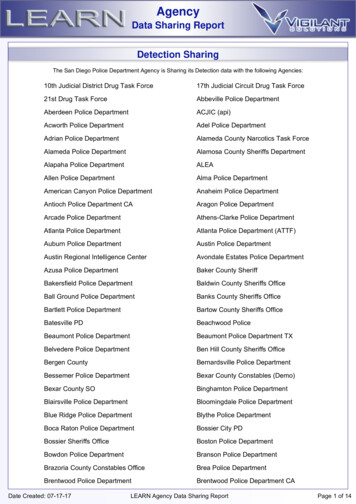
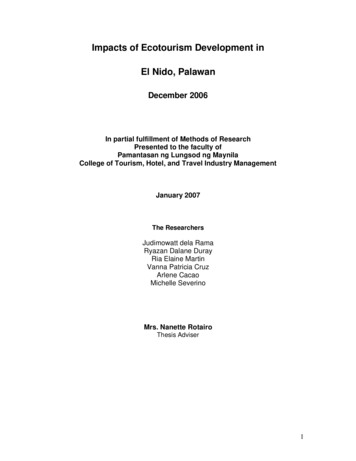
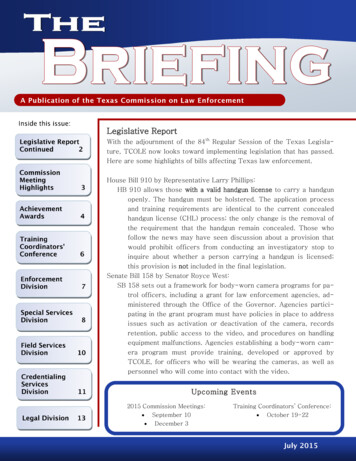
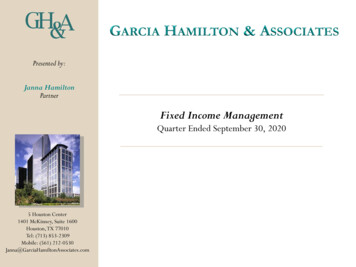
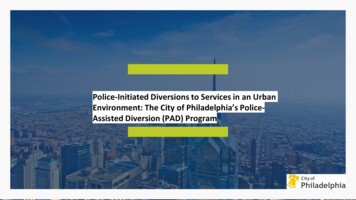
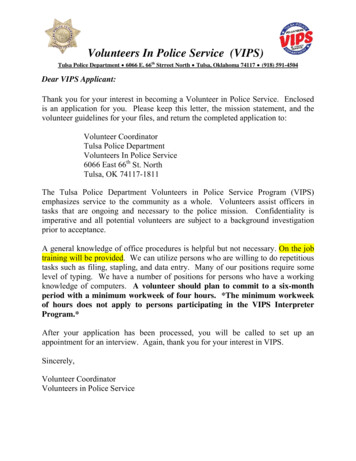
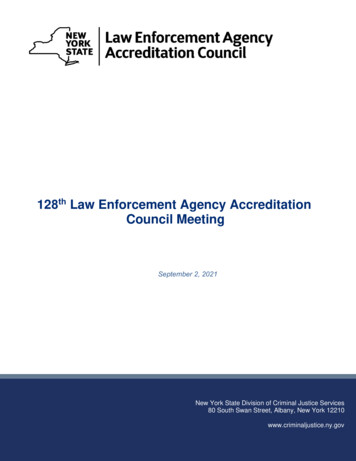
![Vohne Liche Kennels 6SHFLDOL]LQJLQ6WUR QJ6RFLDO3ROLFH'RJVµ](/img/38/reference-listing.jpg)
